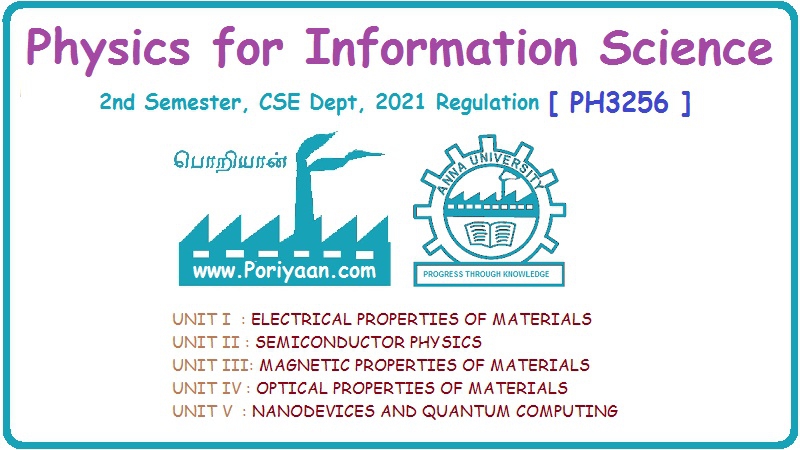Physics for Information Science: Unit III: Magnetic Properties of Materials
Magnetic Principle in Computer Data Storage
Now a days, large number of informations are stored in (or) retrieved from the storage devices, by using the magnetic phenomena.
MAGNETIC
PRINCIPLE IN COMPUTER DATA STORAGE
Now
a days, large number of informations are stored in (or) retrieved from the
storage devices, by using the magnetic phenomena. The main part of these
magnetic storage devices is magnetic recording heads and they function
according to the principles of magnetic induction.
Generally
ferro or ferrimagnetic materials are used in the storage devices, because in
this type of materials only the magnetic interaction between any two dipoles
align themselves parallel to each other. Due to this parallel alignment, even
if we apply small amount of magnetic field, a large value of magnetisation is
produced. By using this property informations are stored in the storage
devices.
In
the storage devices, the recording of digital data (0's and 1's) depends upon
the direction of magnetisation in the medium.
Magnetic parameters for recording
1.
When current is passed through a coil, a magnetic field is induced. This
principle, called "electromagnetic induction" is used as a basic
parameter in the storage device.
2.
The ease with which the material can be magnetised is another parameter.
3.
We know the soft magnetic materials are the materials which can easily be
magnetised and demagnetised. Hence based on this parameter, a data can be
stored and erased easily. Such magnetic materials are used in temporary storage
devices.
4.
Similarly we know hard magnetic materials cannot be easily magnetised and
demagnetised easily. So, such magnetic materials are used in permanent storage
devices.
5.
In soft magnetic materials, the electrical resistance varies with respect to
the magnetisation and this effect is called magneto-resistance. This parameter
is used in specific thin film systems.
Note:
If the change in electrical resistance is very high compared to the
magnetisation, it is called GIANT MAGNETO-RESISTANCE (GMR) effect.
Magnetic Medium
Magnetic
medium is made of magnetic material (ferrous or ferric oxide) deposited on thin
plastic as shown in Fig. 3.36.
Read-Write Mechanism
The
magnetic medium move across the read/write heads and either logic 1's or logic
O's are written on the medium. Then, the medium moves across the head again,
the magnetised spots on the medium generate small electrical signals and this
different direction signals represent logic 1's and O's on the medium.
Now,
when the recorded medium moves over the read head, the change in magnetic field
generates very small signals in the head winding and they are amplified. From
this the logic signals 1's and O's are read depending on the data stored on the
medium.
Physics for Information Science: Unit III: Magnetic Properties of Materials : Tag: : - Magnetic Principle in Computer Data Storage
Related Topics
Related Subjects
Physics for Information Science
PH3256 2nd Semester CSE Dept | 2021 Regulation | 2nd Semester CSE Dept 2021 Regulation
